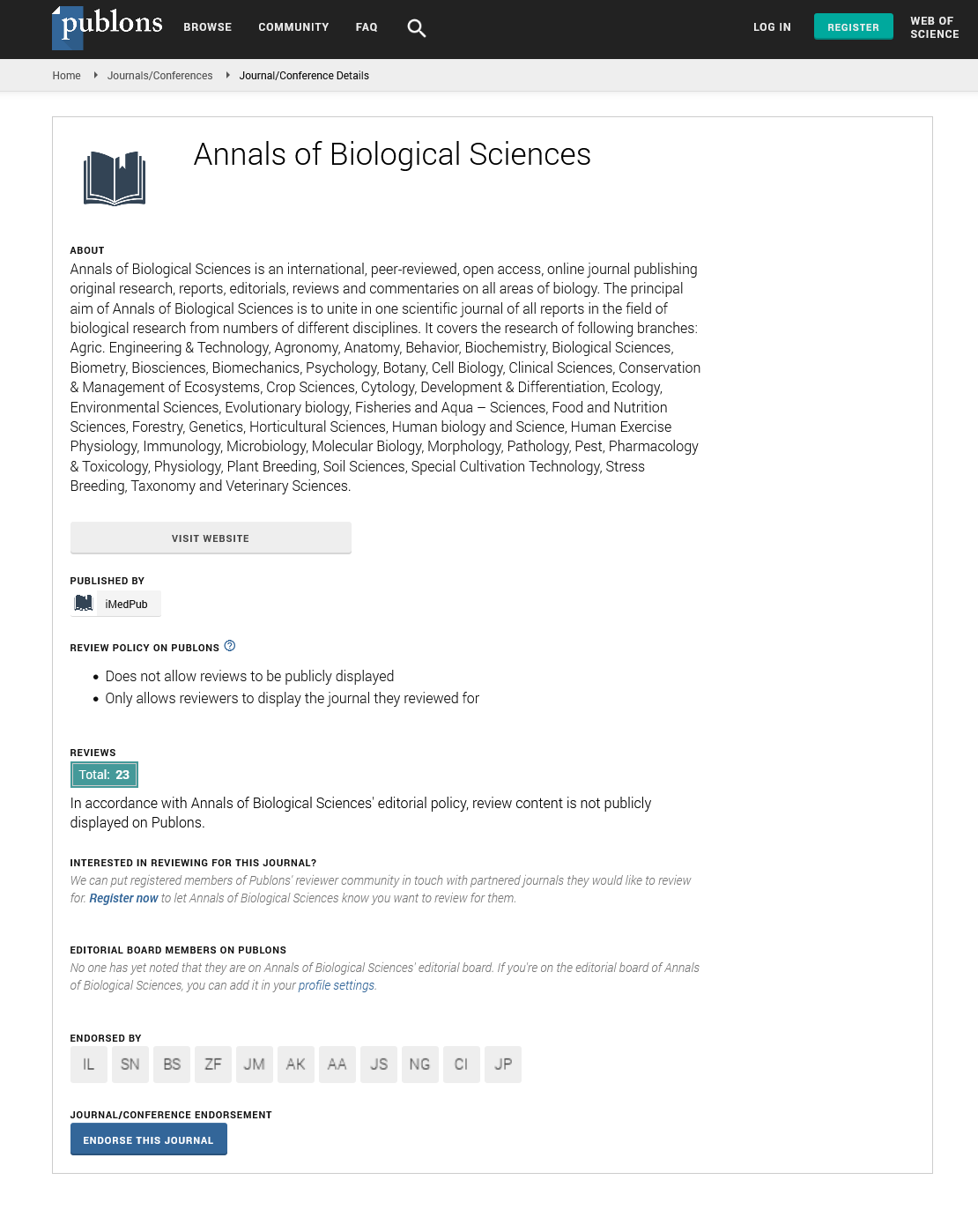ISSN : 2348-1927
Annals of Biological Sciences
On-site removal of antibiotics and antibiotic resistant genes from leachate by aged refuse bioreactor: effects of microbial community and operational parameters
ANNUAL BIOTECHNOLOGY CONGRESS
August 17-18, 2017 | Toronto, Canada
Bing Xie and Yinglong Su
East China Normal University, China
Posters & Accepted Abstracts: Ann Biol Sci
DOI: 10.21767/2348-1927-C1-003
Abstract
The abuse of antibiotics has raised the prevalence of antibiotic resistance, and the high frequency of antibiotic resistance will be a serious global health concern. Landfill is the primary treatment for municipal solid waste, and the generated leachate will be the important hotspot of the antibiotics and antibiotic resistant genes (ARGs). Until now, no effective on-site treatment has been put forward for preventing ARGs dissemination during leachate treatment. Herein, the aged refuse bioreactor was employed to remove antibiotics and ARGs from leachate, and the great removal performance was observed. For the detected antibiotics, the total removal efficiency was about 76.75%, and sulfanilamide and macrolide were removed with high efficiencies (>80%). Among the target ARGs, tetracycline and macrolide resistance genes (tetM, tetQ and ermB) were eliminated with 1.2-2.0 orders of magnitude. The occurrences of ARGs did not correlate with physicochemical parameters, but closely linked to the variations of the bacterial community structure. Redundancy analysis (RDA) indicated the significant correlations between four genera and the distribution of ARGs, which implied that these key genera (including potential pathogens) drove the ARGs removal. Furthermore, the hydraulic loading test confirmed that the aged refuse bioreactor was capable of achieving high removal efficiencies even under shock loading and for the higher loading it was negative for the proliferations of potential ARGs hosts. This study suggested that aged refuse bioreactor could be a promising way for antibiotics and ARGs on-site removal from leachate.
Google Scholar citation report
Citations : 406
Annals of Biological Sciences received 406 citations as per Google Scholar report
Annals of Biological Sciences peer review process verified at publons
Abstracted/Indexed in
- Google Scholar
- China National Knowledge Infrastructure (CNKI)
- WorldCat
- Publons
- ROAD
- Secret Search Engine Labs
Open Access Journals
- Aquaculture & Veterinary Science
- Chemistry & Chemical Sciences
- Clinical Sciences
- Engineering
- General Science
- Genetics & Molecular Biology
- Health Care & Nursing
- Immunology & Microbiology
- Materials Science
- Mathematics & Physics
- Medical Sciences
- Neurology & Psychiatry
- Oncology & Cancer Science
- Pharmaceutical Sciences
